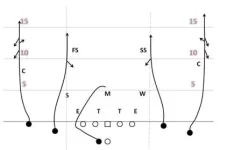Follow-up question for the morning crowd - as an OC, do you give your QB a group of plays to run and let him choose based on what he sees, or do you give him a single play to run? Same kinda question applies to audibles - how do you construct a package of audibles and how are they implemented in a game?
I'm a big fan of just calling the play and letting the offense run it regardless. Let the coaches figure out what the defense is doing and let the players play.
It's understandable if you got a 4 or 5 year qb to let him do what he wants because you've worked together for so long but that rarely happens, think Andrew Luck, even Bridgewater, but that offense wasn't as complicated.
In a year or two it's hard for a guy to understand why things happens. The qb legitimately has to be an OC on the field, think Drew Brees, but even he was lost without Sean Payton.
